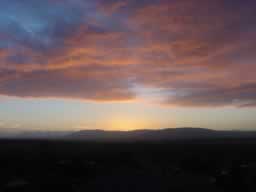Energy flow in a food web
Stick insects eat eucalyptus leaves and get the solar energy trapped by the plant. Other animals, like birds or lizards, will eat the stick insects in order to get the energy into their bodies. Stick insects have a very important role in transferring the energy trapped in plants to other animals in the food chain.
At the end of every food chain are micro-organisms called decomposers. These decomposers do what their name suggests, they decompose dead organisms. Decomposers return the energy trapped in the bodies of animals and in the plant matter of dead plants back to the environment so other organisms can reuse this energy. They break down the organic matter into carbon dioxide, water and energy. These decomposers do the exact opposite to the process we call photosynthesis.
Photosynthesis uses energy (solar) to combine water and carbon dioxide to make organic matter.
Decomposition uses organic matter to produce carbon dioxide, water and energy.
As you can see decomposition is the exact opposite to photosynthesis.
The pictures below indicate the path in which energy travels in a food chain. Match the statements in the box on the left with the letters in the food chain.

1 = a, b, c, or d

2 = a, b, c, or d

3 = a, b, c, or d

4 = a, b, c, or d
b) A Process which is the exact opposite to photosynthesis takes place.
c) A herbivore
d) A source of endless energy.